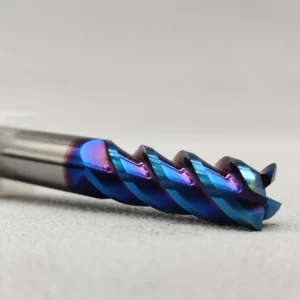Tabla de contenido
PalancaCarbide End Mill Bits
Carbide end mill bits are widely used in milling operations due to their durability, hardness, and high-performance cutting capabilities. To get the most out of your brocas de fresa de carburo and extend their lifespan, proper maintenance is essential. In this article, we will discuss effective maintenance tips that can help you maximize the longevity of your brocas de fresa de carburo.
Proper Handling and Storage:
Proper handling and storage of carbide end mill bits are crucial to avoid damage or premature wear. Handle the bits with care, avoiding dropping or mishandling them. Store them in a dedicated container or tool organizer that protects them from impacts, moisture, and other potential sources of damage.
Cleanliness is Key:
Regular cleaning is essential to maintain the performance of carbide end mill bits. After each use, remove any chips, debris, or coolant residue from the bits and the tool holder. Use a brush or compressed air to clean the flutes and surfaces of the bits. This prevents chip buildup and ensures optimal cutting performance.
Lubrication and Cooling:
Proper lubrication and cooling play a vital role in preserving the lifespan of carbide end mill bits. During milling operations, use appropriate cutting fluids or lubricants to reduce friction and heat generation. This helps prevent tool overheating and extends the life of the cutting edges. Consult the manufacturer’s recommendations for the appropriate lubricant or coolant to use with your specific carbide end mill bits.
Check for Wear and Damage:
Regularly inspect your carbide end mill bits for signs of wear and damage. Look for chipped or dull cutting edges, excessive wear on the flutes, or any visible damage to the tool. If you notice any issues, replace the bits promptly to ensure optimal performance and prevent further damage to your workpiece.
Sharpening and Regrinding:
As carbide end mill bits are used, their cutting edges can become dull or worn. When necessary, sharpen or regrind the bits to restore their cutting effectiveness. Consult the manufacturer’s guidelines or seek professional assistance for proper sharpening techniques. Improper sharpening can lead to subpar performance or even damage to the bits.
Use the Right Speeds and Feeds:
Using the correct speeds and feeds is crucial for the longevity of carbide end mill bits. Consult the manufacturer’s recommendations or machining guidelines for the appropriate speeds and feeds for your specific milling application. Operating at excessive speeds or feeds can cause excessive heat, leading to premature wear or tool failure. On the other hand, running at too slow speeds or feeds can result in inefficient cutting and potential damage to the bits.
Avoid Excessive Cutting Depths:
While carbide end mill bits are known for their durability, excessive cutting depths can put undue stress on the bits and reduce their lifespan. It is important to use appropriate cutting depths based on the material being machined and the capabilities of the specific carbide end mill bits. Operating within recommended cutting parameters ensures optimal performance and prolongs the life of the bits.
Protect Against Corrosion:
Carbide end mill bits can be susceptible to corrosion, especially if exposed to moisture or aggressive chemicals. Protect the bits from moisture and corrosive substances by storing them in a dry environment and using appropriate rust inhibitors or coatings when necessary.
Regular Tool Inspection:
In addition to inspecting the carbide end mill bits, it is also important to regularly inspect the tool holder and spindle. Ensure that the tool holder is clean and properly aligned. Inspect the spindle for any signs of wear or damage that may affect the performance of the bits. Address any issues promptly to prevent further damage to the bits or the milling machine.
Continuous Training and Education:
Staying updated on the latest maintenance techniques and best practices is essential for maximizing the lifespan of carbide end mill bits. Participate in training programs and workshops to enhance your knowledge and skills in tool maintenance. Stay informed about advancements in tool technology and machining practices to ensure you are using the most effective maintenance methods.
Proper maintenance is crucial for extending the lifespan of carbide end mill bits. By following these maintenance tips, including proper handling, regular cleaning, lubrication, and cooling, thorough inspection, and using the correct speeds and feeds, you can preserve the performance and longevity of your carbide end mill bits. Remember, investing time and effort in maintenance pays off by reducing costs associated with frequent tool replacement and ensuring consistent milling performance.
